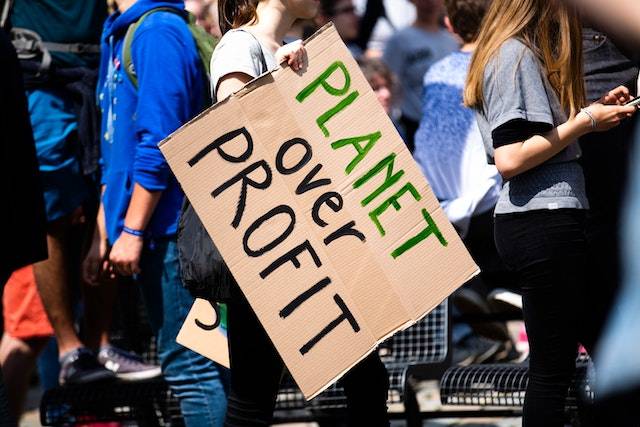Committing to sustainable development helps businesses reduce costs, increase efficiency, and improve their reputation. When businesses go green and set net-zero goals, they are contributing to the fight against climate change.
However, it does not spare them from its effects.
No matter the industry they belong to or how big their operations are, businesses are certain to feel the effects of climate change. Thankfully, sustainability itself can shield them from said effects.
In this article, we will tackle how sustainable practices can help mitigate the impact of climate change on businesses.
Conducting a climate risk assessment
Protecting one’s business from the effects of climate change boils down to managing risks. Before you can manage risks, you must assess them first.
According to Ready.gov, risk assessment is the process of identifying potential hazards and analyzing what could happen if a hazard occurs.
Hence, climate risk assessment is anticipating how the effects of climate change can affect a business.
A climate risk assessment involves evaluating the potential risks and vulnerabilities a business may face due to climate-related events.
It should consider both physical risks, such as:
- Flooding
- Wildfires
- Extreme weather events
It should also consider transition risks, such as:
- Changes in market demand
- Regulatory policies related to climate change
Businesses have a variety of tools and methodologies when conducting a climate risk assessment. They may use climate models and projections to identify areas most likely to experience more frequent or severe weather events.
They can also analyze data on supply chains and operations to find vulnerabilities. These may include dependencies on specific regions or suppliers.
Businesses can use the findings to develop a climate risk management plan. This plan should outline specific steps to be taken to mitigate and adapt. The plan should also be regularly reviewed and updated as new data becomes available or as the business environment changes.
Adapting facilities and infrastructure
Businesses can make changes to their facilities and infrastructure to better withstand the impacts of climate-related risks. This can include a variety of measures, such as:
- Elevating buildings to protect against flooding
- Strengthening roofs and walls to withstand high winds
- Installing storm shutters or other protective barriers
- Improving drainage systems to reduce the risk of flooding or water damage
- Using heat-resistant materials to protect against wildfires
- Installing backup generators or other alternative energy sources to ensure
continuity of operations during power outages
The specific measures that a business takes will depend on location, types of climate risks, budget, and resources.
Just like many sustainability initiatives, adapting facilities and infrastructure can be expensive. Yet, it offers significant long-term benefits. Investing in these measures can help reduce the risk of physical damage and minimize downtime. Most importantly, it can protect employees and customers from harm.
Diversifying supply chains
As mentioned above, vulnerabilities in the supply chain include dependency on specific regions or suppliers. To avoid this, businesses must diversify their supply chains.
Diversifying supply chains necessitates less reliance on a particular provider, area, or mode of transportation. When a company gets its materials and products from multiple sources, they are less likely to be exposed to events such as sea-level rise and water scarcity.
To diversify their supply chains, businesses can take a variety of steps, such as:
- Sourcing materials and products from multiple regions
- Using multiple modes of transportation, such as air, sea, and rail
- Developing relationships with new suppliers in different regions
- Collaborating with other businesses to create shared supply chain networks
- Investing in local or regional production facilities to reduce dependence on global supply chains
These steps may vary depending on a company’s industry and region.
Diversifying supply chains can provide significant benefits for businesses. It reduces exposure to climate risks, thereby minimizing the frequency of disruptions. Moreover, it provides cost savings and improves operational efficiency.
Investing in renewable energy
Making the switch to renewable energy is one of the big-ticket items in sustainability efforts. It demands a hefty sum upfront, but it provides extraordinary benefits down the road.
But how does it protect businesses from climate-related risks?
By transitioning to renewable energy sources, businesses can reduce their reliance on fossil fuels. This is beneficial since fossil fuels are subject to supply chain disruptions due to extreme weather events, political instability, and other factors.
Using renewable energy also makes companies resilient in the face of climate-related risks. Unlike fossil fuels, renewable energy sources such as solar and wind can continue to generate power even during hurricanes and floods. They also significantly reduce or entirely remove carbon and methane emissions.
Aside from energy security and resiliency, renewable energy also makes accessible technologies that can help fight climate change. These include battery-powered machines and electric vehicles.
Businesses can invest in renewable energy by installing solar panels or wind turbines in their own facilities. They can also purchase renewable energy credits (RECs) from third-party providers. Additionally, some utilities offer green power programs that allow businesses to purchase renewable energy from the grid.
Final words
Setting net-zero goals is just one of the first steps in sustainable development. However, achieving these goals requires sincere and sustained commitment from businesses.
This is challenging to do, but it is certainly worthwhile. By embracing sustainability, businesses can not only protect themselves from the risk of climate change, but also contribute to a better future for all.
Read more: What are the Basics of Six Sigma: What Every Business Should Know



